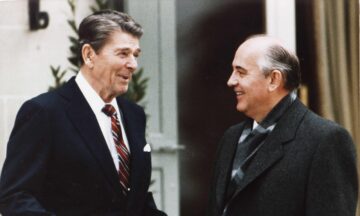Jessica T Mathews in The Guardian:
 Decades of agonisingly difficult negotiations built up a dense structure of treaties, agreements and even a few unilateral moves dealing with offensive and defensive nuclear weapons of short, medium and long range, with provisions for testing, inspections and an overflight regime for mutual observation. Often the two sides would only give up systems they no longer wanted. Frequently the language of the agreements was the basis of future friction. On the US side, the political price of securing Senate ratification of treaties could be extremely high.
Decades of agonisingly difficult negotiations built up a dense structure of treaties, agreements and even a few unilateral moves dealing with offensive and defensive nuclear weapons of short, medium and long range, with provisions for testing, inspections and an overflight regime for mutual observation. Often the two sides would only give up systems they no longer wanted. Frequently the language of the agreements was the basis of future friction. On the US side, the political price of securing Senate ratification of treaties could be extremely high.
But for all its shortcomings, arms control brought down the total number of nuclear weapons held by the two countries from 60,000 to roughly 11,000 today. (The exact number is classified.) Under the most recent treaty, New Start (strategic arms reduction treaty), signed in 2010, each side is limited to 1,550 deployed weapons, with the rest in storage. By any accounting, that 80% drop (95% counting just deployed weapons) is – or was – a notable achievement.
Unfortunately, the past tense is correct, because since the US withdrew from the anti-ballistic missile (ABM) treaty in 2002 – thereby legitimising the unilateral renunciation of an agreement by one party if it no longer finds the restrictions to its taste – the other agreements have fallen one by one.
More here.
Enjoying the content on 3QD? Help keep us going by donating now.
